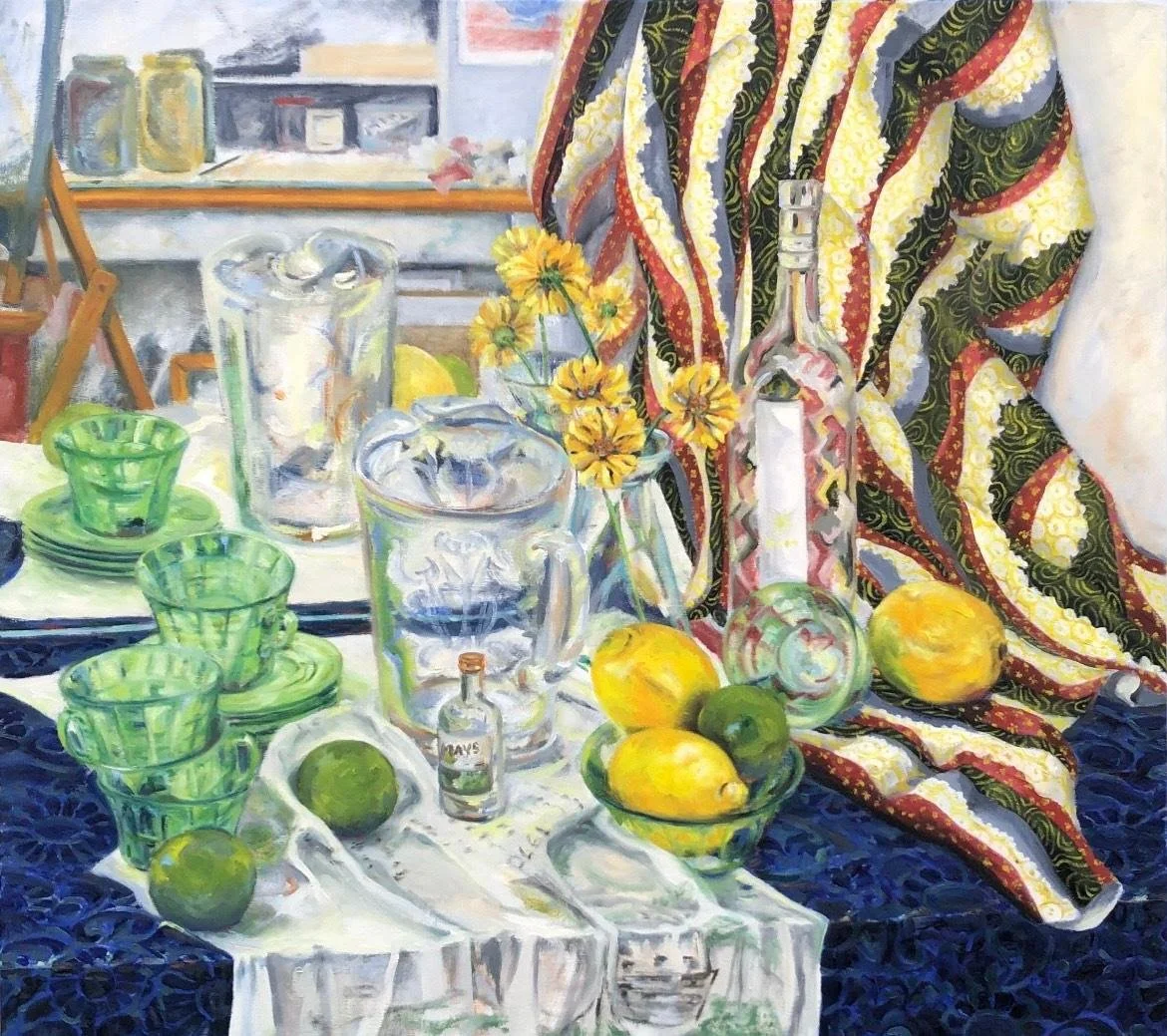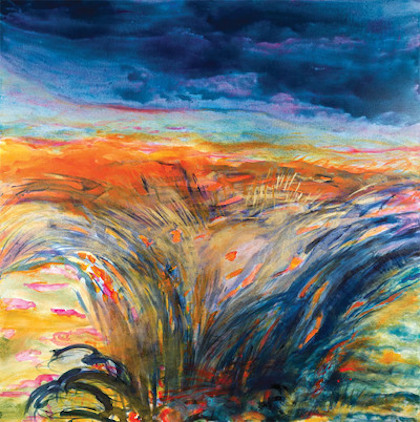
Interacting environments
From “Stems — Paintings by Melinda Lane’’, at Colo Colo Gallery, New Bedford, Mass., through Dec 31.
‘
She says on her Web site:
“Influenced by New England's architecture, and decorative arts I create paintings of interior spaces filled with objects that interest me. I focus on the interaction of decorative materials and nature. The interplay of the natural world and the decorative environment reveals itself as I study the selected objects and the surfaces they occupy. Patterns and rhythms develop as I work to create the structure and space of an interior landscape.
”The process begins with the consideration of objects, surfaces, and vantage points. Common items mix with found objects and plant material as I use color, design, and materials to create an entry point for each painting. These spaces evolve through I study of the objects in situ and develop a geometric scaffold which creates a compositional framework. How do objects interact with each other? How do they sit in space and on the surface? Do color and pattern create movement and rhythm? What shapes and ideas do I discover as I spend time looking? How many layers do I see, and do these layers create an engaging image?
”Over time, sustained observation moves me beyond literal representation, and I create a singular space from a myriad of instances, both observed in the moment and remembered experiences. Rather than present an image, I work to create a space in which the viewer can dwell, explore, and discover their own thoughts and pleasures.’’
Calm and chaos
"Chaos'' (oils and oil sticks), by Julie Gorn, in her show "Color: Chaos and Harmony,'' at the Colo Colo Gallery, New Bedford, through Oct. 26.
Our world is hectic and mesmerizing, beautiful and noisy. Ms. Gorn responds to these contradictions with work whose colors calm viewers even as they evoke the busy pace of modern life.
Darkening light
"Dark Light'' (mixed media on canvas), by JOAN POTKAY, in the show ''Land Forms East,'' at Colo Colo Gallery, New Bedford, through Dec. 19.
I love the paradoxical idea of a "dark light.'' It reminds me of Churchill's famous line about the Nazis:
"But if we fail {to defeat the Nazis}, then the whole world ... will sink into the abyss of a new Dark Age made more sinister ... by the lights of perverted science.''
--Robert Whitcomb



